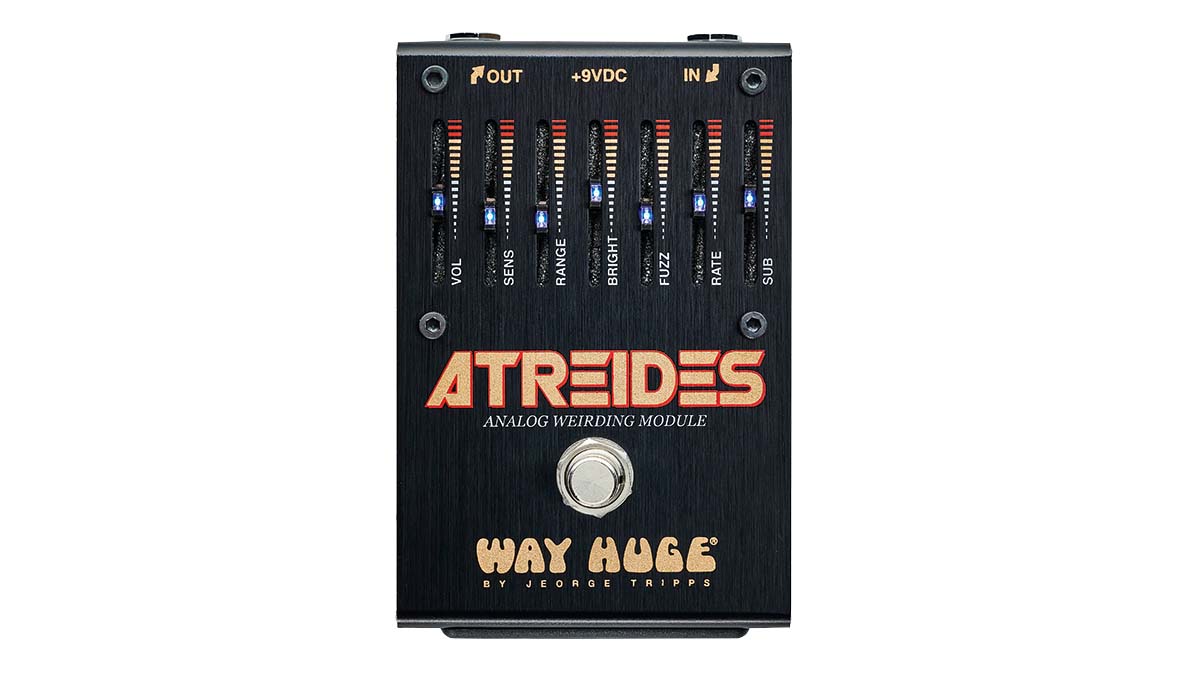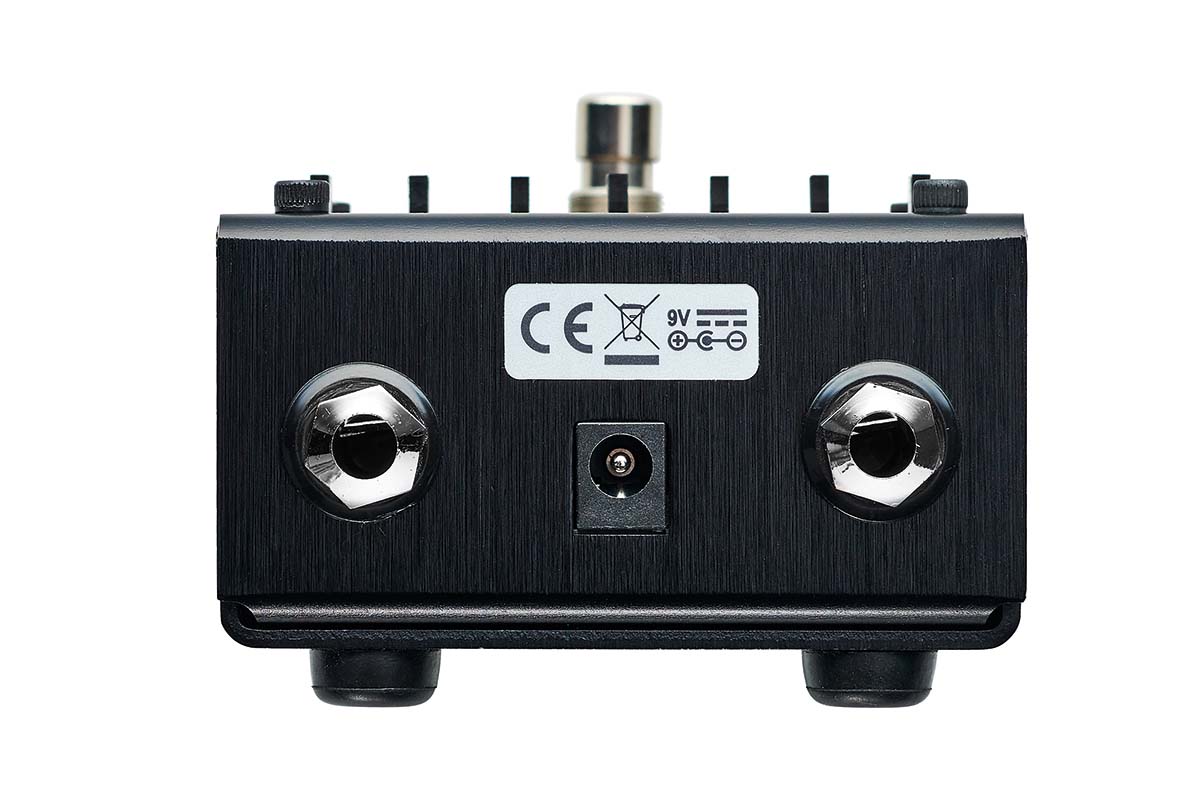Guitar World Verdict
Is this for you? Well, ask yourself: do I want to get weird? If the answer is no, walk away now. Otherwise, this pedal could be the gateway to a whole new range of guitar tones and textures.
Pros
- +
It’s definitely weird.
- +
Nice control array in a compact size.
- +
Easy battery access.
Cons
- -
Can require careful technique to play without glitches on some settings.
You can trust Guitar World
Way Huge designer Jeorge Tripps has been responsible for some cheekily named pedals in his time – this is the man behind the Swollen Pickle, the Camel Toe and the Purple Platypus, among others.
Weird names perhaps, but generally applied to pedals that reside in conventional genres such as overdrive. This time, though, it’s the pedal itself that’s genuinely weird: the Atreides Analog Weirding Module offers a combination of envelope filter, fuzz, phaser and sub octave.
The pedal actually takes its name from David Lynch’s 1984 film adaptation of the Frank Herbert Dune novel where the Weirding Module is a sonic beam weapon that translates sounds into attacks, and Paul Atreides is the protagonist. The pedal itself is said to take inspiration from the battery-powered Electro-Harmonix Mini Synth from the 80s, which is notable for its array of sliders.
Consequently, the control surface of the Atreides here consists of a set of seven sliders, all with a detente notch at their central travel position and all lighting up blue when the pedal is active. Setting up your sound requires a juxtaposition of the sliders to bring in the overall effect you require.

In use
We thought that getting a fix on what each slider did would be advisable before diving straight in and arranging them in nice patterns, but, to be fair, plenty of happy accidents can result in playable sounds just by messing around with them. Of course, it’s also possible to dial in an unholy row!
The first slider is purely a volume control for the output and can tailor whether the pedal gives you unity gain, a boost or a cut when kicked in, dependent on the setting of the other sliders. The central slider, Bright, is also conventional, providing a tweak to the EQ to add cut-through stridency at the top-end.
The first effect to dial in is an envelope filter that’s controlled by the second and third sliders, which offer filter sensitivity and filter range respectively for some synth-style quackiness. If you want to add a bit of dirt to the stew, the fifth fader brings in a gnarly fuzz.
Modulation in the form of a phaser is also present with its rate controlled by the sixth slider. Should you want a more intense or maybe subdued effect, there’s an internal trimmer to adjust the fader’s feedback. The final slider in the array blends in a sub octave effect that can be set to be either one or two octaves down via an internal slide switch.
Sounds
The thing with this pedal is that there’s no null position of the sliders where there’s no effect – if you only have the volume slider up and switch it out of bypass, you’ll still get a basic distorted sound, which you can use as a starting point to bring the other sliders in and layer things together. Pushing up the Bright slider immediately gives you a snarky distortion that you can use for chords as well as single notes, but generally the pedal is monophonic.
Like just about every other guitar synth, you have to adjust your playing technique to get the best out of it without glitches, and maybe pay more attention to your fretboard position and pickup choice. With certain sounds, we found it behaved best with playing further up the fretboard when using the neck pickup.
There’s a certain dynamic response so you can dig in and ‘play’ the pedal, but there’s also gating built in so you can roll guitar volume back for staccato notes. As for the sounds, we quite liked the tone with just the sub octave with a little of the fuzz and phaser mixed in for a fat fusion lead tone.
Elsewhere, there’s some robust riffing sounds to be extracted, plus plenty of warbly, growly and spiky nastiness that’s possibly anathema to classic rock and blues purists, but may be exactly what’s need for off-the-wall onstage impact.

Specs
- PRICE: $199 / £215
- ORIGIN: USA
- TYPE: Analog Weirding Module pedal
- FEATURES: True bypass CONTROLS: 7x sliders: Vol, Sens, Range, Bright, Fuzz, Rate, Sub. Internal slide switch and trimpot, bypass footswitch CONNECTIONS: Standard input, standard output
- POWER: 9V battery or 9V DC adaptor 9mA
- DIMENSIONS: 80 (w) x 123 (d) x 65mm (h)
- CONTACT: Jim Dunlop
Trevor Curwen has played guitar for several decades – he's also mimed it on the UK's Top of the Pops. Much of his working life, though, has been spent behind the mixing desk, during which time he has built up a solid collection of the guitars, amps and pedals needed to cover just about any studio session. He writes pedal reviews for Guitarist and has contributed to Total Guitar, MusicRadar and Future Music among others.












